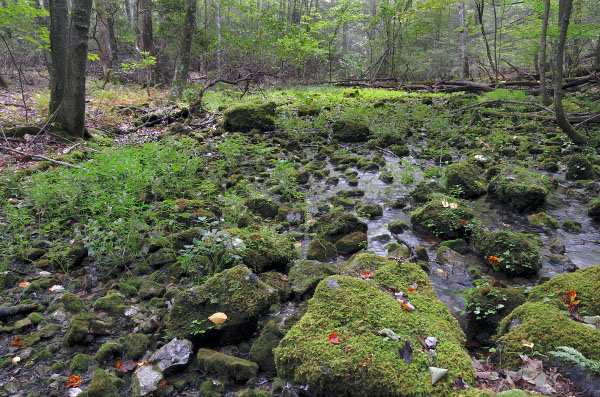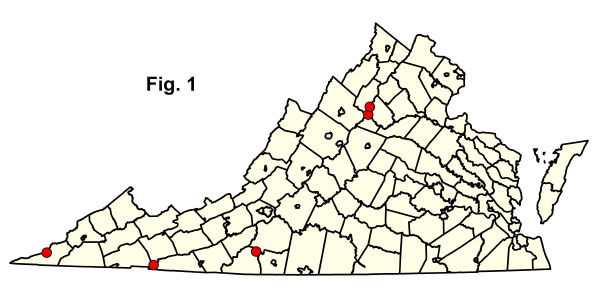

Virginia Department of Conservation and RecreationAn official website of the Commonwealth of Virginia Here's how you knowAn official websiteHere's how you know

Virginia Department of Conservation and RecreationAn official website of the Commonwealth of Virginia Here's how you knowAn official websiteHere's how you know
 Department of Conservation and Recreation
Department of Conservation and Recreation
 Table of Contents
Table of ContentsMontane Woodland Seeps
Montane Woodland Seeps are saturated herbaceous wetlands occurring on relatively steep, often gravelly or bouldery slopes at sites of groundwater discharge. These communities are scattered in the western Virginia mountains and Piedmont foothills, but are most abundant above 760 m (2500 ft) elevation. The habitats are typically narrow, rocky, and partially shaded by tree species rooted in adjacent upland forests. A few occurrences encompass large spring seeps on high-elevation cliffs. Vegetation is similar to the herbaceous component of seepage swamps, but is usually more forb-rich. Common species include scarlet beebalm (Monarda didyma), southeastern cutleaf coneflower (Rudbeckia laciniata var. digitata), orange jewelweed (Impatiens capensis), rough-leaved goldenrod (Solidago patula), rough-stemmed goldenrod (Solidago rugosa var. rugosa), white turtlehead (Chelone glabra), golden saxifrage (Chrysosplenium americanum), golden ragwort (Packera aurea), American false-hellebore (Veratrum viride), marsh blue violet (Viola cucullata), marsh marigold (Caltha palustris var. palustris), eastern rough sedge (Carex scabrata), and, in the southern Blue Ridge, umbrella-leaf (Diphylleia cymosa). Graminoids, including bluejoint (Calamagrostis canadensis), shortbeak sedge (Carex baileyi), and nodding sedge (Carex gynandra), may be prominent locally.
Reference: Byers et al. (2007)
Click here for more photos of this Ecological Community Group.
 © DCR-DNH, Gary P. Fleming.
© DCR-DNH, Gary P. Fleming.

 Download a spreadsheet of compositional summary statistics (Excel) for each of the community types listed below.
Download a spreadsheet of compositional summary statistics (Excel) for each of the community types listed below.

